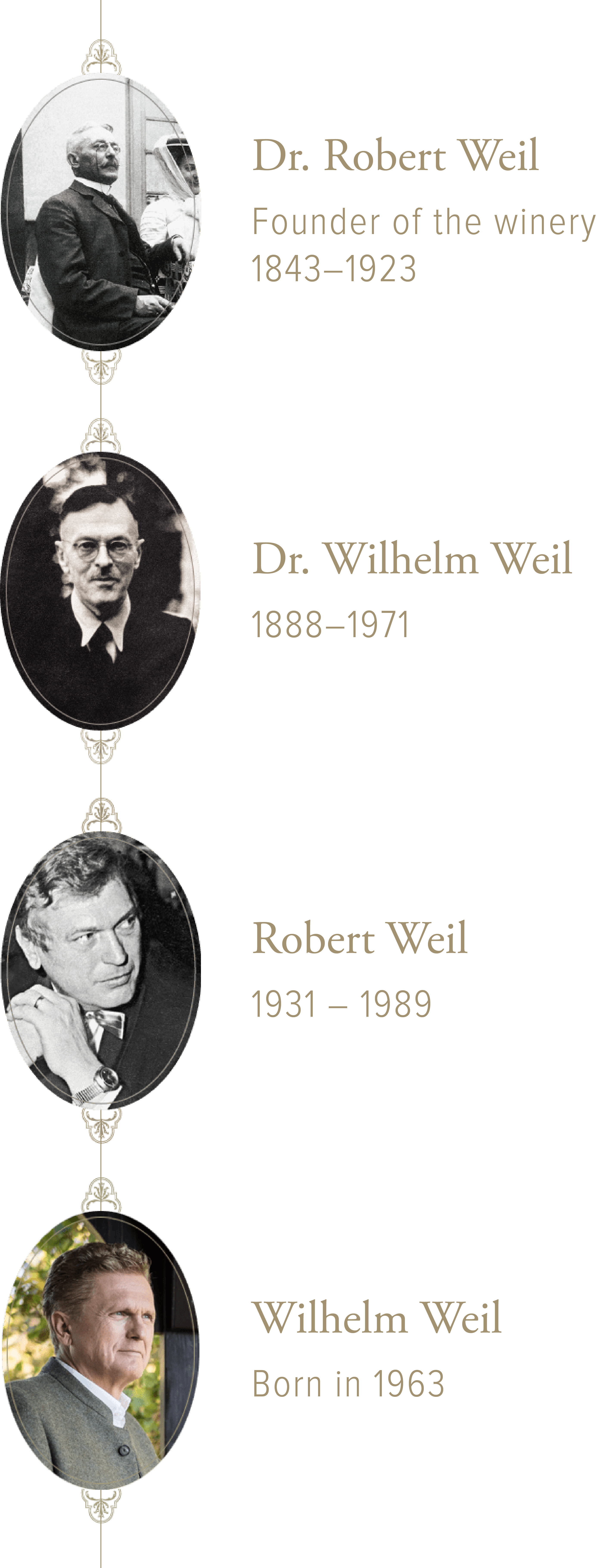Quality through the union of tradition and modernity
Vines have been cultivated at Weingut Robert Weil for four
generations. The founder of the estate, Dr. Robert Weil, purchased
the first vineyards on the Kiedricher Berg in 1867. At the time
he was still a professor of German at the Sorbonne in Paris
until events prior to the Franco-Prussian War (1870/71) forced
him to leave. He bought the manor of the late English baronet,
Sir John Sutton, in Kiedrich (a village in the Rheingau dating
from 905) and settled there.
Sutton, quite a wealthy man and a patron of the arts, first
came to Kiedrich in 1857 in the course of one of his art tours.
He fell in love with its unique ensemble of architectural gems
such as the St. Valentine’s Gothic church and also the numerous
aristocratic estates dating from the medieval, Renaissance, and
baroque periods as well as the Scharfenstein castle ruins of
the Mainz electors and of course the vineyards and forests of
the surrounding countryside.
As of 1875, in addition to his work as a journalist, Dr. Robert Weil
expanded his wine estate by acquiring the finest parcels of the
Kiedricher Berg. Thanks to his uncompromising, quality-oriented
viticultural philosophy, the estate advanced quickly and its wines
were soon distributed internationally. As such, Auslese Rieslings
from the Dr. Robert Weil estate were served as the white wine
counterparts to great Bordeaux wines at many European
imperial and royal courts. A Gräfenberg Riesling from the 1893
vintage helped spread the estate’s renown throughout the world.
The royal court of Austria purchased 800 bottles of the 1893
Auslese from the “Kiedricher Berg” for sixteen gold marks per
bottle–an astonishing price even in those days when Rheingau
Rieslings were already the most expensive growths in the
world of wine. Not only the nobility drank Weil Rieslings at
the turn of the century but also the burgeoning middle classes.
Ausleses from the Kiedricher Berg were on the wine list of the
Hotel Adlon in Berlin as well as those of other distinguished
hotels throughout Europe. In 1928, on its maiden voyage to
New York, the wine list of the airship “LZ 127 Graf Zeppelin”
featured a 1920 Kiedricher Gräfenberg Trockenbeerenauslese
Best Cask No. 20 from the Weil estate.
Once upon a time, the vision and entrepreneurial courage of Dr. Robert
Weil proved essential to the survival of the estate. After all, his privately
owned winery had to stay afloat in a sea of notable Rheingau estates with
deep-rooted ties to the church or aristocracy. His great-grandson Wilhelm
Weil has carried that bold approach into modern times.
MODERN...




